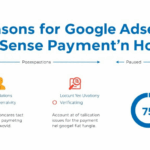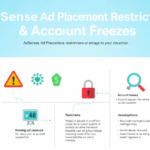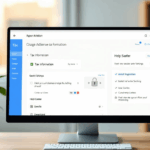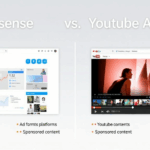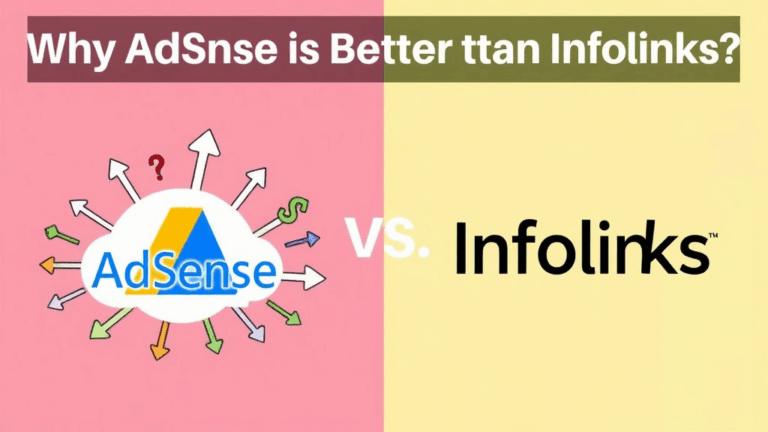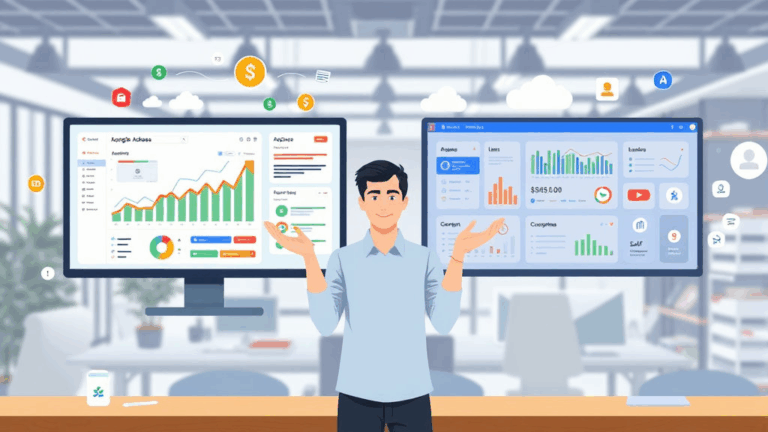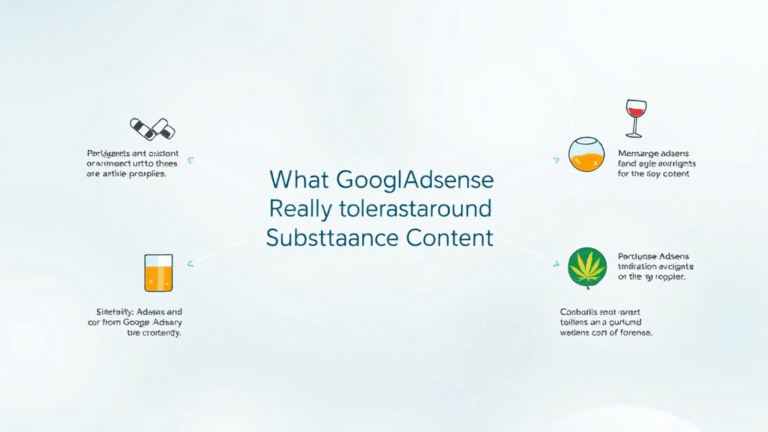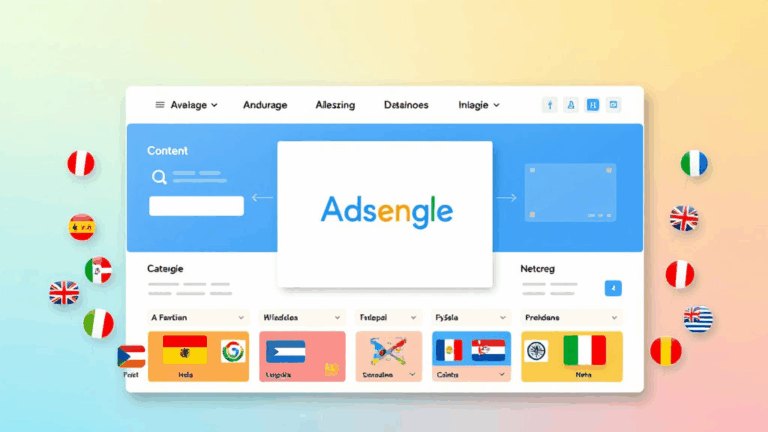Managing Revenue Risk Across Multiple AdSense Streams
Why Google Can Crush You Without Warning
You don’t realize how fragile AdSense really is until you wake up to a red notification in your inbox that your account has been disabled for “invalid traffic.” No further explanation. No breakdown. No context. Just nuked. I had one site earning maybe low four figures a month — legit content, real users — vanish in 48 hours because of a rookie mistake embedding a dashboard preview that refreshed every 2 seconds (a JS chart lib I forgot capped fetch rates). Bounced requests got flagged. Boom.
The bigger problem is there’s nothing resembling a portfolio when all your monetization depends on a single API key with toggles in someone else’s GUI. It’s not just the single AdSense account risk — it’s also property-level bans. You could be compliant on Site A and get earnings disabled on Site B because of auto-generated content, even if it’s on a different vertical. They see it all as one bundle.
If your monetization plan feels like a Jenga tower made of .js dependencies and biometrics-farmed CTR — you’re not diversified, you’re exposed.
Worse: if you’re using Google Ad Manager or AdMob via the same Google account, enforcement actions can bleed across, sometimes without clear documentation. There’s a logic mismatch inside Google systems — enforcement looks account-level, but warnings often cite property-level violations. That’s a hell of a betting slip to sit on.
Account Silos vs Property Silos
I tried divvying up my content clusters: parenting on one domain, finance tools on another, plus a few small niches (language learning, keyboard reviews, don’t ask). All under one AdSense. Thought it bought me simplicity. But one of those domains had some AI summary content added quickly — think 20 articles just to avoid a category stub — and yes, that got dinged for “low-value content.” Entire account earnings dropped for a week. No exact log of what, when, or where.
What’s not documented: Google uses machine-detected thresholds to flag deliberate portfolio expansion (like if 3+ domains sprout under one account within 30 days). I once found this watching logs—App Engine flagged “suspicious growth curve” from an automated system I’ve never had frontend access to, other than internal API payloads reviewing App + Web behaviors. It may or may not trigger policy review manually triggered later.
How to Silo Something Properly
- Use separate AdSense accounts (yes, it’s against TOS if it’s the same person — but separate legal entities don’t trigger that)
- Run domains from different registrar profiles to avoid obvious clustering
- Separate Analytics properties and
pub-IDs to keep everything logically distinct - If you must test cross-domain placement, add referral disclaimers in robots.txt for downstream scraping traces
- Never use identical content templates across sites — even the same hero image is surprisingly traceable at scale
One colleague uses 3 LLCs registered in different states — not because he’s paranoid, but because experience taught him how fast fallback income can evaporate.
You’re Not Diversifying If It’s All Ads
Here’s the trap: splitting sites and ad accounts doesn’t magically remove the fact that everything still depends on CPM-based display units. If you’re only monetizing with ads — AdSense, Mediavine, AdThrive — you’re still in a mono-income stream. You just dressed it up a bit differently.
License-backed affiliate partnerships are one way to break the mold. I tested a model where we embedded usage-based access to PDF templates (legal docs, lease templates) and licensed re-use of them via Gumroad + Stripe. Nothing complex. But revenue per visitor was 4-5x higher than display. I only stumbled into it because I noticed a weird bounce-delay on a site with a download button — users hovered long enough that context switching didn’t kill them. Just needed a way to make the click worth more.
Actual monetizable formats I’ve used (non-AdSense)
- Licensing technical diagrams via Creative Market
- Selling email courses with preloaded Notion templates
- Embedding Stripe checkout popups inside WebView embeds
- Building API wrappers for niche datasets behind payg access
- Offering re-publishing rights to rewritten health articles on parenting blog formats
Every single one of these brought in probably under $500/month each — but added up, they outpaced the AdSense check which was headline-grabbing but brittle.
Content Licensing Is Not Plug-and-Play
When people hear “license your content,” they think: click one checkbox and suddenly Twitter threads become IP. Doesn’t work like that. I tested licensing some of my blog archives to a media platform trying to train a chatbot on “reliable personal tech content.” They offered to pay for 50+ posts. I had to manually sanitize all non-permissible images (stock licenses don’t carry over), remove any user-uploaded screenshots, and rewrite 404 support call walkthroughs to remove brand-specific links.
They were ingesting content via XML feeds. Problem was, my ancient RSS generator still added comment URLs in legacy schema. That glitched their scraper and stripped full bodies from one third of the pieces. They blamed me. Not cool — but, yeah, their ingestion engine expected article bodies to begin with <content:encoded>, while mine used just plain <description>.
The irony: you finally find a way to make your words “assets,” and your broken feed schema makes it unreadable.
Turns out there’s a little handful of companies that buy micro-content bundles — 30-50 article sets, usually for translation or syndication — but they absolutely check for prior licensing conflicts. If even one post was published elsewhere under a different Creative Commons tag, it can poison the batch.
When Reporting Fails You Completely
The revenue split table in AdSense’s UI still doesn’t show you how multipliers interact. Like, if you have CPM set by bid floors on Open Bidding, but are intersecting that with anchor ad format weights and experimental lab variants — what actually lands in your daily revenue bucket is mathematically untrackable. Even if you pull JSON from the AdSense Management API at the /accounts/self/adclients level, you get obscured fields like "estimatedEarnings" without granularity on
- ad size display success rate
- network timeout fallbacks
- AMP path routing overrides
- placement overlap boost logic between responsive units
One weird thing I noticed: when running cached SPA shells (Vue), your revenue dips roughly 6–8% unless you delay hydration by ~250ms. No AdSense update mentioned that, but I saw the dip consistently. My theory is that some async ad loading metrics get missed by PageSpeed-integrated evaluation bots unless the initial paint finalizes under particular timing thresholds.
What Gets Flagged (And You’ll Never Hear Why)
I had this moment where a housing affordability piece got about 90K views in 14 hours. Legit traffic. A TikTok channel cited it. CTRs were normal. And yet, platform auto-throttled all non-anchor units within 24 hours. Not a violation. Just lower fill rates. Almost nothing in logs except a single-line annotation: “rate_adjustment_applied: false_win_reroute”.
You won’t find that string in any Google documentation. The monetization needle drops, and you’re pulling your hair out because the page speed didn’t change, Core Web Vitals were green, and there were no policy alerts. It just quietly nerfs your earnings. Feels petty until you realize how wide the filter net must be. Thousands of minor rule-based modifiers operate like cold policy shadows — never surfacing in public tooling.
Honestly I still don’t know what tripped the wire. Might’ve been use of the word “debt” in a chart caption. Or possibly because I quoted a Zillow link in text and that domain showed up in someone else’s ad block list signals that week.
When Extensions Break Your Ad Units
I run like 19 browser extensions across regular usage — things like uMatrix, Paywall Bypass Tracker (don’t @ me), and a handful of privacy audit tools. I also test staging builds in weird profiles. One time I was debugging a lazy-load ad unit that refused to fire on scroll pause.
Spent hours debugging DOM mutations, IntersectionObservers, visibility thresholds, etc. Turns out Ghostery was injecting a <noscript> into an offline worker and that crashed the ad script cascade because of how I placed a fallback unit under a <template> tag — something AdSense hated without ever explicitly throwing an error.
I disabled three content filters, hard-refreshed in incognito, rendered properly. Shocking that a dummy extension from five years ago killed two weeks of Q1’s backend development work.
I now sandbox with --disable-extensions flags before yelling at my own setup. Saves sanity.
Hostname Inconsistencies That Drain You Dry
This one’s so obvious once you see it but I missed it for a year:
If you’re running subdomain routing, like blog.example.com vs app.example.com, make damn sure that the AdSense verification is solid on both. Because if the hash key validation fails on one — or worse, you used CNAME routing without A record chain integrity — requests will leak without showing as invalid. They’ll simply be ignored.
I only discovered it because I captured fetch logs in Cloudflare Workers and noticed unfulfilled requests passing referer headers without firing adsbygoogle.push(). Turns out we had a trailing redirect that jumped from www to non-www to blog subdomain. AdSense only verified under one path. The rest quietly routed earnings to oblivion.

